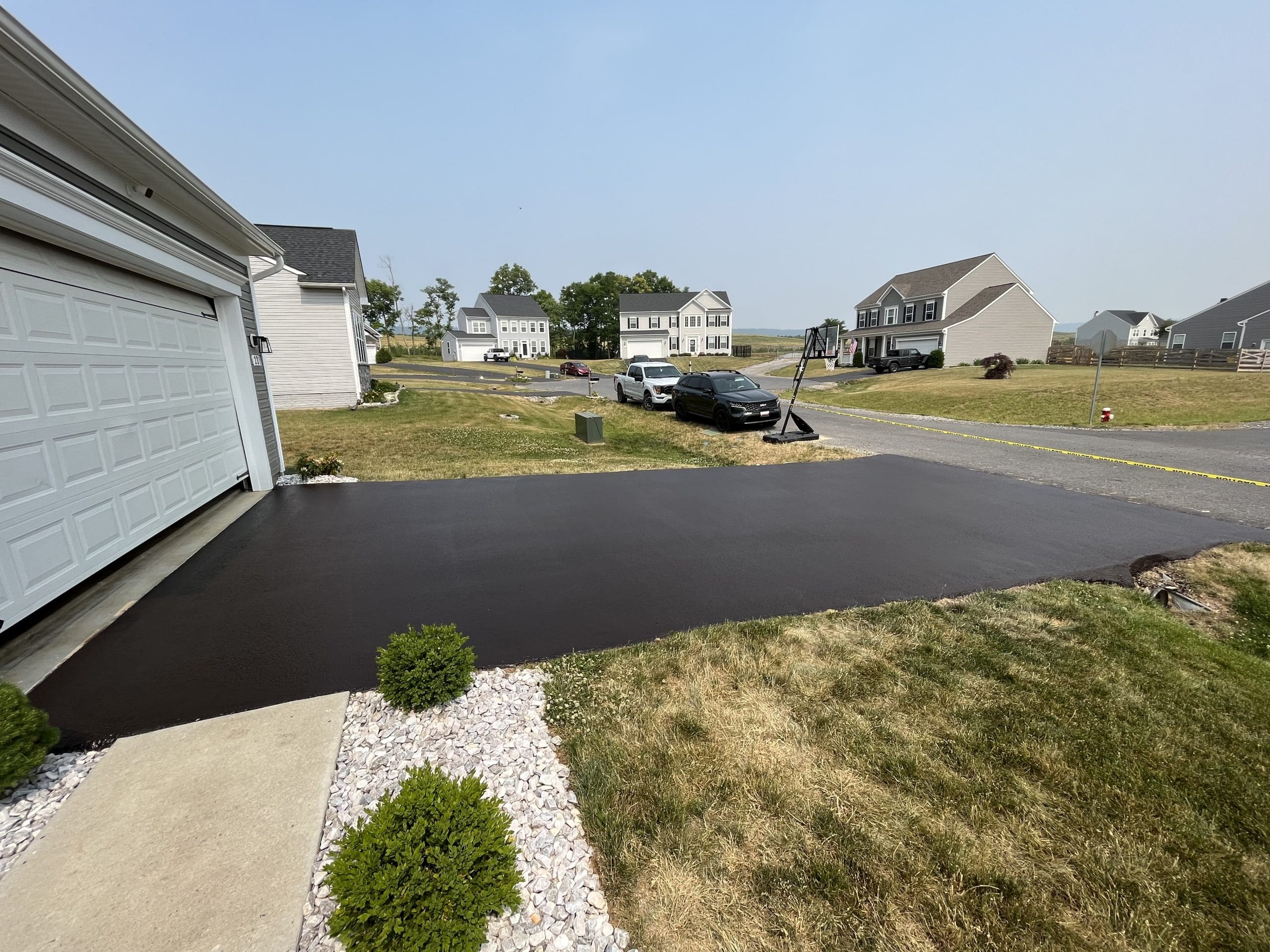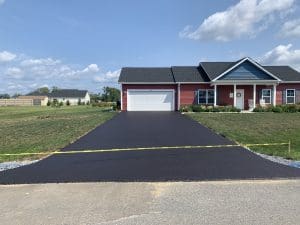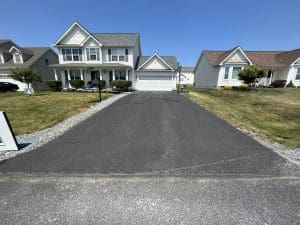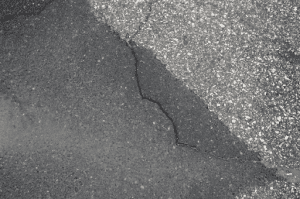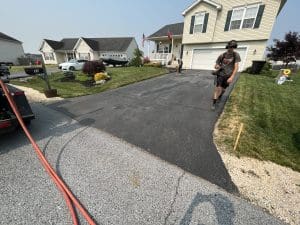Preventing Asphalt Aging: How Sealcoating Keeps Surfaces Youthful
Asphalt surfaces endure a constant battle against time and the elements, leading to inevitable signs of aging. The combination of weather exposure and daily traffic can cause asphalt to become brittle, faded, and cracked. However, there’s a solution to maintain the youthful appearance and strength of asphalt. Enter sealcoating, a preventive measure that can be key in preventing asphalt aging while also boosting its aesthetic charm. Unraveling the science behind asphalt aging, the impact of sealcoating, and the rewards of consistent upkeep is vital for safeguarding the longevity and allure of your asphalt surfaces.
Decoding Asphalt Aging
Before diving into preventing asphalt aging, grasping the root causes of asphalt aging is crucial. Understanding why asphalt deteriorates is key to adopting effective preservation strategies.
Asphalt is a popular choice for paving due to its durability and cost-effectiveness. However, over time, it undergoes aging characterized by cracks, potholes, and fading. Understanding the scientific basis behind this deterioration underscores the significance of maintaining and safeguarding asphalt surfaces.
The Science of Asphalt Deterioration
Asphalt comprises aggregates, binder, and air voids. The binder, typically bitumen, binds the aggregates to create a solid, flexible pavement. Yet, this binder isn’t impervious to time and environmental influences.
UV rays, oxygen, and moisture combine to degrade the binder over time. This degradation leads to tiny cracks, allowing further infiltration of air and water—accelerating aging. As these cracks deepen and expand, they offer entry points for water, leading to weakened layers beneath and the emergence of potholes.
Additionally, constant vehicle weight and pressure contribute to asphalt’s decline. The recurring stress from vehicular traffic weakens the structural integrity, causing ruts and surface deformations.
Factors Speeding Up Asphalt Aging
Several factors contribute to hastened asphalt aging. Understanding these accelerants helps strategize effective countermeasures for prolonging asphalt’s life.
Heavy Traffic Impact
Excessive traffic significantly quickens asphalt aging. The movement of vehicles, particularly heavy ones, applies immense pressure, leading to faster deterioration. Vehicle weight compacts the asphalt, triggering cracks and potholes.
Extreme Temperature Influence
Temperature extremes play a pivotal role. In heat, the binder softens, resulting in rutting. Cold weather, conversely, induces rigidity and cracking. Fluctuating temperatures intensify the aging process.
Weather Challenges
Harsh weather—rain, snow, and ice—accelerates aging. Moisture infiltration through cracks worsens due to freeze-thaw cycles. Such cycles can foster potholes and surface irregularities.
Chemical Interaction
Oil, gasoline, and chemicals exacerbate aging by weakening the binder. These substances penetrate asphalt, rendering it brittle and crack-prone. Chemical reactions accelerate degradation.
To conclude, understanding the science of asphalt decline and the factors hastening it is pivotal for effective maintenance strategies. Addressing these factors and investing in measures like sealcoating can elongate asphalt’s lifespan, sidestep costly repairs, and avert replacements.
Sealcoating’s Role in Asphalt Preservation
Sealcoating emerges as an economical and effective solution against asphalt aging. It forms a protective shield, shielding surfaces from UV rays, moisture, and chemical harm.
Asphalt surfaces constantly face environmental hazards that hasten their decline. UV rays from the sun degrade asphalt’s binder, rendering it brittle and prone to cracks. Moisture infiltration, whether from rain or snow, exacerbates damage through freeze-thaw cycles. Additionally, chemicals like oils and gasoline corrode asphalt’s structure.
Unveiling Sealcoating
Sealcoating entails applying an asphalt emulsion blended with fine aggregates and additives onto asphalt surfaces. This coating acts as a protective barrier, sealing existing cracks and halting the intrusion of harmful elements.
The asphalt emulsion bonds to the asphalt surface, bolstering its durability. Fine aggregates, such as sand, enhance texture for improved vehicle traction. Additives, like latex or polymers, enhance the sealcoat’s flexibility, allowing it to expand and contract alongside the asphalt without cracking.
Sealcoating’s Armor Against Aging
Sealcoating tackles asphalt aging on multiple fronts. Primarily, it acts as a shield against UV rays, curbing binder breakdown and fading. The sealcoat deflects sunlight, curbing heat absorption and minimizing oxidation’s impact. This retains asphalt’s black hue, presenting a fresh, well-maintained look.
Moreover, sealcoating seals cracks, impeding moisture and air intrusion, curbing further deterioration from freeze-thaw cycles. By filling cracks, it bars water from the underlying pavement layers, minimizing pothole risks. It also erects a barrier against air, hindering oxidation and crack formation.
Finally, sealcoating defends against chemicals, oils, and gasoline, preserving asphalt’s integrity. These substances can corrode and weaken asphalt. The sealcoat prevents their infiltration, facilitating easy spill cleanup while maintaining a smooth surface.
In essence, sealcoating assumes a pivotal role in conserving asphalt quality and lifespan. By fending off UV rays, moisture, and chemicals, it halts aging and preserves pavement strength. Regular sealcoating can notably elongate asphalt life, bypassing extensive repairs and replacements.
Benefits of Routine Sealcoating
Consistent sealcoating reaps multiple rewards in sustaining asphalt’s youth and endurance.
Prolonged Asphalt Lifespan
By sealing surfaces and thwarting damaging intrusions, sealcoating dramatically extends asphalt’s longevity. It circumvents costly repairs and replacements, saving both time and money in the long haul.
Enhanced Aesthetic Appeal
Sealcoating reinstates asphalt’s rich black shade and augments overall visual allure. The rejuvenated surface elevates property curb appeal, heightening visual magnetism and welcoming aesthetics.
Sealcoating Process: A Stepwise Insight
The sealcoating journey involves several steps for optimal outcomes.
Pre-Sealcoating Prep
Effective sealcoating begins with thorough surface cleaning. Removing debris, dirt, and vegetation is essential. Addressing existing cracks ensures a smooth, uniform surface.
Application of Sealcoat
Specialized equipment, like sprayers or squeegees, is used to apply sealcoat evenly. A comprehensive, uniform application covers the entire surface. Typically, two coats are recommended for ultimate protection.
Choosing Ideal Sealcoating Products
While sealcoating excels in safeguarding, selecting the right products is paramount for desired results.
Critical Components to Seek
Quality asphalt emulsions headline sealcoating ingredients. Aggregates like sand bolster performance. Climate and traffic-specific products are vital.
Types of Sealcoats Explained
Various sealcoat types— asphalt-based, coal tar-based, and acrylic—present unique benefits and applications. Familiarity empowers informed decisions.
In conclusion, preventing asphalt aging hinges on proactive measures, particularly sealcoating. Grasping the science behind deterioration, comprehending sealcoating’s impact, and embracing regular maintenance is your arsenal for safeguarding asphalt’s allure and resilience. By adhering to the sealcoating process and selecting suitable products, you lengthen asphalt surface life, enrich visual charm, and diminish the need for costly remedies. Don’t allow aging asphalt to tarnish surfaces; opt for preventive maintenance and bask in youthful asphalt for years to come with Top Gun Sealcoating.
